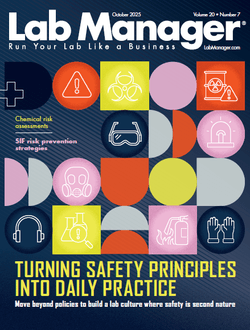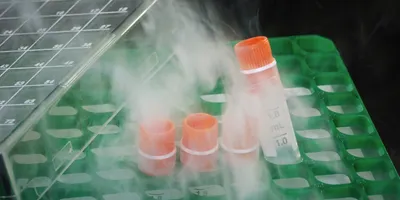In EV battery production, product adoption and business expansion depend on meeting consumer needs, most importantly safety. This is followed by performance (including energy density), longevity, robustness, and faster charging, all while delivering lower production costs. Meeting these core needs relies heavily on effective analytical testing to understand and characterize battery formulations. Spectroscopic techniques are among the most important suites of techniques used to characterize raw battery materials, intermediates, byproducts, and end products, and can help deliver safer batteries with improved performance.
The role of spectroscopic techniques in battery innovation
While atomic spectroscopy techniques like ICP-OES and ICP-MS are more commonly used, they are destructive and require the dissolution of the sample. In contrast, molecular spectroscopy techniques like UV-Vis, FTIR, and Raman provide valuable information, and have the added benefit of being nondestructive and requiring limited sample preparation. Both atomic and molecular spectroscopic techniques are needed to deliver high-performing and safe batteries.
Manufacturers of batteries follow strict quality control procedures during R&D and routine production. In leading-edge laboratories, initial steps involve re-qualifying and, if needed, re-purifying incoming raw materials before they can be used for downstream processes as this reduces troubleshooting later. Fourier transform infrared (FTIR) spectroscopy is an analytical technique used to analyze materials in these main components of lithium-ion batteries as well as manufactured components, including electrolyte and separator materials. Additionally, FTIR can be utilized to understand transient lithium species, impurities, and changes in chemical bonds during battery degradation.
In recent years, Attenuated Total Reflectance FTIR (ATR-FTIR) has been developed for accurate analysis of various sample states (solids, liquids, semisolids, pastes) without extensive sample preparation. The FTIR system can be placed in a moisture-controlled environment (e.g., glovebox) to allow for the analysis of hazardous or moisture-sensitive samples. This technique is suitable for material identification of salts, organic solvents, binder and separator materials, and electrodes, providing valuable information for battery developers.
Raman spectroscopy is another molecular technique useful for screening, as it can analyze solid, liquid, and gaseous materials without sample preparation. New technologies like Spatially Offset Raman Spectroscopy (SORS) improve traditional Raman by allowing material identification through opaque barriers, enabling high-throughput analysis without removing raw materials from storage containers.
Electrolyte solutions are one of the many components of a battery and are essential to its performance. To evaluate the effect that a specific electrolyte solution has on performance, it is applied in a cell and analyzed at routine intervals during charge-discharge cycles to determine colorimetric and compositional changes over time. This provides information about the degradation rate and associated byproducts and can support the development of better formulations. UV-Vis spectroscopy is a key technique for analyzing the color of these near-clear solutions, requiring a highly accurate and sensitive spectrophotometer. When paired with a flow cell pump, this method is ideal for production quality control of hazardous samples, enabling safe handling and efficient high-throughput analysis.
The identification of both intentionally and unintentionally added trace elements, their abundance and ratio to one another is important to characterize in raw materials, intermediates, and battery components, as they directly correlate with battery performance, safety, and stability. ICP-OES is an atomic spectroscopy technique commonly employed to analyze these elemental compositions due to its high sensitivity and ability to handle complex matrices. For battery innovators, automated semi-quantitative analyses performed alongside targeted measurements can be especially useful in providing information about unknowns in the sample and aid method development. Such capabilities can be further enhanced by visual aids such as elemental heat-maps, providing quick guidance on potential issues and additional datapoints to support process improvements.
ICP-OES instrumentation used for raw material and battery characterizations have tight specifications for matrix tolerance and interference-handing capability, requiring ‘real world’ demonstrations to prove-out their accuracy, repeatability, reproducibility, and long-term stability in complex matrices. High salt, organic components, and F components may generate ionization and spectral interferences which can adversely impact analytical accuracy. Ionization interferences can be overcome via matrix matching, the use of internal standards and radial viewing on dual-view systems. In contrast, spectral interferences from high-transition elements, carbon and silicon have a pronounced effect on the accuracy of trace elements and may be overcome by software innovations. For example, Fitted Background Correction (FBC) can automate background corrections, and Fast Automated Curve-fitting Technique (FACT) can spectrally deconvolute the spectra via mathematical algorithms, which is particularly useful for organic samples prone to carbon-based interferences.
Addressing downtime
While accuracy is paramount, it is also important for process laboratories to reduce unplanned downtime. There are several efficiencies which can be gained in ICP-OES techniques to reduce unplanned downtime. For example, fully integrated intelligent dilution solutions can reduce the need for manual dilutions of overly concentrated samples. This approach can both reduce human error, improve efficiency without compromising analytical accuracy and precision, all the while reducing the number of man-hours and single-use consumables.
Nebulizer clogs and sample component damage from high-lithium content matrices can also contribute to unplanned downtime. Instrument and software innovations can alert users to potential blockages, aid early intervention, and prevent sample losses and component damage. For longer-term solutions, fully integrated switching valve solutions can shorten residence times of samples in the nebulizer and plasma, providing accurate measurements over long periods whilst delivering a host of cost and performance benefits.
The future of battery R&D and production centers on delivering on consumer needs. Selecting the right analytical partner who understands these needs and how to deliver them is critical to advancing battery science, as well as supporting the development of safe, high-performing, and responsibly-produced battery technologies.










